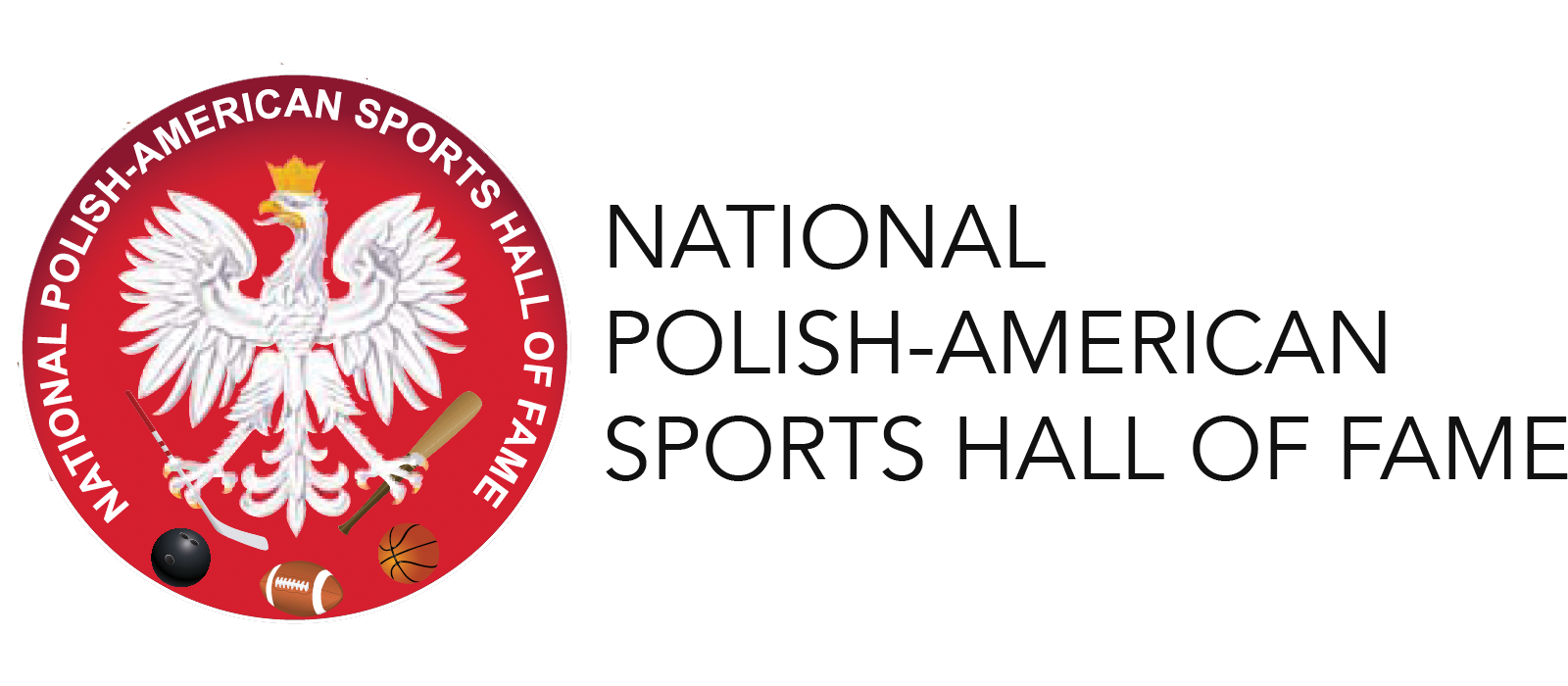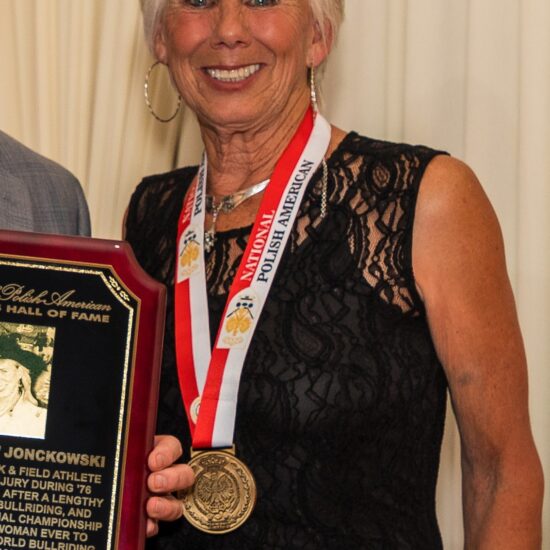
Lynn “Jonnie” Jonckowski
Description
Inducted June 26, 2025
An outstanding collegiate track and field athlete, Jonckowski’s Olympic dream ended in 1975 when she suffered a back injury during the 1976 U.S. Olympic pentathlon qualifications. Following a lengthy recovery period, she directed her athletic drive to a sport rarely performed by women, becoming one of the most accomplished female bull riders in the history of the sport. Using a one-handed style previously used exclusively by male riders, the two-time Women’s Nationals Finals Rodeo (WNFR) Bull Riding Champion (1986 and ‘88) was soon ranked among the top 20 bull riders in the nation (male or female) earning an invitation to the 1992 and 1993 Men’s World Bull Riding Championship – the first woman ever to compete in that event. In1991, she was inducted into the National Cowgirl Hall of Fame.
INDUCTION BANQUET PROGRAM STORY — June 26, 2025
The Biggest Badass Bull Rider You May Not Know: Meet Jonnie Jonckowski
By: Andrew Giangola
In days gone by, long before the feats of amazing athletes were being played out daily via social media and web blogs, there was a fearless female athlete whose exploits might have broken the internet had it existed.
Her name is Jonnie Jonckowski, and can you imagine the attention she would have received on social media when beating the boys in a bull riding while getting her nose virtually torn from her face?
Jonckowski would become the first woman to compete against men at the highest level in professional bull riding at the Justin World Bull Riding Championship in Scottsdale, Arizona, in 1992.
The close call when her nose was nearly lopped from her face happened well before that, when she was starting out, trying her darndest for a spot in bull riding camps and schools.
Dozens had rejected her. They wouldn’t take a girl.
“It ain’t easy to slip in and be one of the guys when you’re not one of the guys,” she said.
So, next time she kept it simple, calling to enter as “Jonnie,” which on the phone sounds a lot like Johnny.
She was accepted into the rodeo training school along with 100 male would-be rodeo stars, and challenged to ride a motley assortment of bulls. But girl, boy, it didn’t matter. Bulls don’t recognize pronouns, and nobody was going to outmuscle them.
On the final day, down to 10 riders, a school champion would be determined. One rider standing tall was a strong-minded, curly haired blond, bubbly like a shaken Fresca but determined to overturn a lifetime of uninvited doubt.
Jonnie drew a bull named Spotted Dog.
“I didn’t like that bull from the get-go,” she said. “He didn’t have a rhythm or any pattern. He had big horns and was built like a big ol’ yak in pioneer days pulling a cart. There was nothing about him I liked.”
Jonnie made the eight seconds, and when she pulled the tail of her rope to dismount, the bull tripped. She was ready to throw a leg over him, but Spotted Dog hooked a horn and flipped. Half sitting on the ground, she saw a hoof coming at her.
“I thought, ‘Oh God, he’s going to kick me in the face!’ My head snapped back. I didn’t feel a thing. I thought he missed me. I jumped to the side but couldn’t see well.
The coaches ran out and said, “Jeez, your nose is torn off! But you stayed on. You won!”
Her face looked like it had come out of a blender. Medics applied compresses and loaded her into the ambulance. Jonnie was rushed to the nearest hospital – 40 minutes away. Her rotten luck since being matched with Spotted Dog took a turn. A humongous, face-saving turn.
A national plastic surgeon’s convention was in town.
The out-of-town specialists who were summoned were excited to see her, as Jonckowski remembers. “A bull had exploded my face apart. I was ripped from my hairline down through my eyebrows across the bridge of my nose. I was a good project for them.”
Jonnie’s rearranged face was fixed by the very best in the business. At no charge.
“They put me together for nothing. I was like a Humpty Dumpty test dummy. They were thrilled to have me,” she said with a laugh.
It was actually a serious injury in a different sport – track and field – that set Jonckowski on a path to pursue the world’s most dangerous one: bull riding.
Since she was old enough to play sports growing up in North Dakota and Montana, Jonnie had been a gifted athlete in whatever she tried.
An incorrigible tomboy withering to no challenge, she wanted to be first, the best, the highest, the strongest. Had to outrun everybody. The rougher the horseplay, the better. Jonnie’s mom made her wear jeans because she kept tearing up her dresses. (“Mom wound up wishing she hadn’t done that,” she said.)
Rambunctious little Jonnie didn’t stay small. In high school, she shot up nine inches to 5’ 8” – a lanky, rangy girl who began winning track and field events. With “the Olympics on my brain,” she was second in the country running collegiate track at Flathead Valley Community College (a small school in Kalispell, Montana that held its own against NCAA powerhouse universities) and appeared headed for the 1976 summer games in Montreal.
In the final qualifying event for the Pentathlon, however, she clipped a hurdle at full speed and went sprawling. Jonnie badly injured her back and was temporarily paralyzed. The dream was over.
She left college. For two years, she could barely walk. She was lost and despondent. One afternoon with her mom outside Billings, she saw a sign advertising an all-girls rodeo. She was no longer able to run like the wind but figured she could sit on an animal doing the work.
“I was so naïve, I didn’t even know to be afraid,” she said. “If others could do it and survive, how bad could it be?”
She started getting on bulls – with only one hand in the bull rope, not the two hands other women were told to use. The more she tasted the rush of the rides, the hotter the fire burned.
“You don’t do it to get hurt,” she said. “You do it because it feels great when it goes right.”
She also began hearing that girls shouldn’t be riding bulls because strong, able men have been killed doing so.
She was 22. In 10 years, Jonnie Jonckowski would be a world champion bull rider.
But first, she had to bulk up.
“I was a gangly, skinny kid for a long time – big knees, all elbows. I looked awfully skinny,” she explained.
Feeling the power of riding on top of a veritable freight train, realizing the gravity of her decision to continue to compete, and wired to favor risk-taking over failure, Jonckowski didn’t stay skinny for long.
After deciding to ride full time, she “lived in a gym seriously building my body.” She ran herself through high-intensity cardio routines, lifted weights, and created her own exercises, like putting a basketball between her knees, turning her toes out, and jumping around. She got ripped, boasting 7 percent body fat.
“You gotta be strong through the middle to ride bulls, and my abs were ridiculous,” she said. “I was a tough son of a gun. A big part of bull riding is reflexes to counteract the bull. As an athlete, I knew that reflex doesn’t go through fat well. Other girls riding were flapping all over the place. I was in control, so I’d get the points.”
In 1986, she won her first World Championship in the now-defunct PWRA (Professional Women’s Rodeo Association) by taking her last ride with a crushed leg after being stepped on in the final round leading into the championship.
Her damaged leg had blown up like Popeye’s arm. Doctors warned that a blood clot from the injury could kill her. She didn’t need a high score, just one successful ride to win the championship. Jonnie made it to the bucking chutes on crutches and had to be hoisted onto the final bull. She rode him.
She had her gold medal.
Jonckowski would fly to New York to sit for an interview with David Letterman, who commented, “You thought track was too dangerous, so you tried something safer…like bull riding.”
Earning that buckle the hard way, fair and square, allowed for good-natured joking. She didn’t want to be a martyr or recklessly stupid, just recognized as the world’s best. Jonnie wore the buckle upside down. Whenever she looked down, she wanted to see WORLD CHAMPION.
She’d win another World Championship and, in 1991, was inducted into the Cowgirl Museum and Hall of Fame. Riding her first bull in the late 1970s, she retired in 2000 at 46 years old.
“I didn’t quit it, it quit me,” she said. “My body couldn’t take it, or I’d still flippin’ be out there. To this day, I’ll see four or five of those bulls in a performance, and I say, ‘I wish I had a rope. I could ride that one!’ Probably a bad thought, but I still have it. You can’t do something for 25 years, get on 1,500 bulls when you count ‘em up, feelin’ and feedin’ off the crowd, the lights, the mud, the blood, the whole thing, limpin’ out of the arena draggin’ the rope, you can’t have that adrenaline poppin’ out and flushing though your body all that time and still not crave it.”
“Man, I had a helluva ride. I was really blessed. I didn’t plan on being different. All I knew my whole life is to be all out. It takes guts to go out there to do what your heart tells you to do at full bore. I was a bull rider, and if you’re not all or nothing, you probably won’t be a very good one.”
Andrew Giangola is Vice President, Strategic Communications for PBR (Professional Bull Riders). Jonnie Jonckowski’s full story is in his book, Love & Try, awarded best nonfiction book of 2022 at the Western Heritage Awards. Full author proceeds benefit injured bull riders through the Western Sports Foundation.
Categories
- 2025
- Bull Riding


